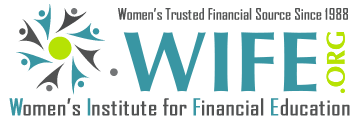 Albert Einstein – “Not Everything That Counts Can Be Counted”
Albert Einstein – “Not Everything That Counts Can Be Counted”
If you have money in, or are just thinking about, emerging market mutual funds, I would strongly suggest that you incorporate the message found in the Einstein quote in your thought process.
The investment community’s assessment of emerging markets seems to focus its evaluations on quantitative economic growth data. While the numbers are often impressive, they don’t always tell the whole story.
The research tools discussed below provide what the legendary radio broadcaster [1950-1990], Paul Harvey, would call “the rest of the story,” i.e., Einstein’s qualitative analytical insights.
The following five sources of country-risk information are readily available from free websites.
While no one denies the opportunity for growth in emerging-markets, the following developed- versus developing-country [the BRICs] data comparisons highlight how long and steep the hill is that the latter will have to climb just to come close to developed market status.
The CIA’s World Factbook provides comprehensive country data on 267 world entities.
As an illustration, let’s look at just one of its important socio-economic indicators – per capita GDP [2012 est.]:
- USA $50,700
- UK $37,500
- Germany $39,400
- Japan $36,900
- Brazil $12,100
- Russia $18,000
- India $3,900
- China $9,300
The World Bank’s annual Doing Business report’s fundamental premise is that economic activity requires good rules related to such items as property rights, effectiveness of legal systems, the predictability of economic interactions, contractual protections, etc.
A high ranking [1 highest] out of 183 countries is indicative of an economy with a high level of economic opportunity:
- USA 4
- UK 7
- Germany 20
- Japan 24
- Brazil 130
- Russia 112
- India 132
- China 91
The World Economic Forum’s annual Global Competitiveness Index is comprised of 12 “pillars of economic competitiveness” and gives 142 countries a ranking [1 highest] and score [7 highest] for each one [2013]:
- USA 7 and 5.47
- UK 8 and 5.45
- Germany 6 and 5.48
- Japan 10 and 5.40
- Brazil 48 and 4.40
- Russia 67 and 4.20
- India 59 and 4.32
- China 29 and 4.83
Corruption traps millions of people worldwide in poverty that breeds social and political unrest that is detrimental to economic development.
Founded in 1993, Transparency International developed the Corruption Perceptions Index (CPI), which ranks 182 countries annually on the perceived prevalence of corruption within each nation and assigns a ranking [1 best] and a score [100 best]. Rank and score data for 2012:
- USA 19 and 73
- UK 17 and 74
- Germany 13 and 79
- Japan 17 and 74
- Brazil 69 and 43
- Russia 133 and 28
- India 94 and 36
- China 80 and 39
The Index of Economic Freedom is published annually. The Index ranks [1 highest] and scores [100 highest] 185 countries on ten critical benchmarks that gauge economic success.
Rank and score data for 2013:
- USA 10 and 76.0
- UK 14 and 74.8
- Germany 19 and 72.8
- Japan 24 and 71.8
- Brazil 100 and 57.7
- Russia 139 and 51.1
- India 119 55.2
- China 136 and 51.9
Qualitative risk data are an important element in measuring international investment risks. The indicators we have just reviewed do not get the attention they deserve.
“Going global” sounds enticing, but investing based on current opinions as opposed to factual perspective can be dangerous to your financial health.
